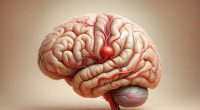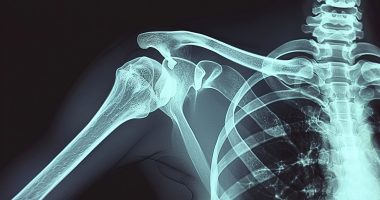Bradycardia
What is bradycardia?
Bradycardia is a type of heart rhythm disorder in which the heart rate is less than 60 beats per minute. Bradycardia occurs in the primary pacemaker (sinus node) or electrical impulse conduction disorders (various blockages).
Description of the disease
A normal heart rate of less than 60 beats can only be considered by well-trained athletes. Optimal oxygen consumption ensures regular physical activity in a healthy person, so this rhythm is characteristic of young, trained men. Slowing down the rhythm at rest or at night is also a variant of the norm. However, in most cases, the rhythm slows down because of organic (irreversible) heart diseases.
Typically, the heart contracts at 60-80 beats per minute. This rhythm is set by the sinus node (located in the right atrium). The rhythm developed by the sinus node is carried out through the heart’s ventricles: first the sinoatrial (atrioventricular) node, then the bundle of His (located in the muscles of both ventricles, with two branches, one for each ventricle). Disruption of the production of electrical impulses by the sinus node occurs due to myocardial infarction, various intoxications, inflammation of the myocardium (myocarditis), hormonal disorders, etc.
Doctors distinguish the following types of sinus bradycardia:
- neurological or extracardiac (cause located outside the heart) – disruption of hormonal balance, metabolic disorders.
- organic – cardiosclerosis, scarring after a heart attack.
- medicinal;
- toxic;
- physiological (normal), which is observed in athletes.
Bradycardia also occurs when the sinus node stops working, and the atrioventricular node takes over its job. The rhythm frequency of this node is much lower – about 40 beats per minute.
Symptoms of bradycardia
Symptoms are caused by an interruption in blood flow due to rare heartbeats.
The person does not feel the frequency of about 60 beats in any way; it is detected by chance during the study. The critical threshold is 40 beats per minute, and there are such symptoms:
- dizziness;
- a serious weakness;
- fainting;
- rapid and persistent fatigue;
- shortness of breath;
- transient visual disturbances;
- volatile blood pressure;
- chest pain;
- concentration problems;
- short-term memory lapses;
- episodes of disorientation.
During a decrease in blood flow, the brain is the first to suffer from experiencing oxygen starvation. There is a pathognomonic (found only in this disease) sign of Morgagni-Adams-Stokes attacks, in which a person suddenly loses consciousness and falls when there are no precursors, but may have short-term seizures. The attack lasts from a few seconds to one minute, after which the person gets up as if nothing has happened. Such attacks are caused by acute breaks in the blood supply. They are life-threatening; if the attack continues, one may stop breathing.
Causes of bradycardia
Bradycardia is often a result of disruptions in the heart’s electrical system, which controls the timing and sequence of heartbeats. The condition can affect individuals of all ages, from infants to the elderly, and may occur for various reasons.
A decrease in the activity of the sinus node occurs for the following reasons:
- advanced cardiosclerosis;
- exposure to cold;
- neurocirculatory dystonia with a predominant parasympathetic nervous system tone;
- various neuroses, with autonomic nervous system disorders;
- mechanical pressure on the carotid sinus (can be caused by a tight tie or tight collar);
- increased intracranial pressure due to traumatic brain injury or meningitis, brain swelling or bleeding;
- the effect of certain medicines – cardiac glycosides, quinidine preparations;
- exogenous poisoning, nicotine, industry leads;
- reduced thyroid function;
- serious intestinal infections;
- severe hepatitis with severe jaundice;
- prolonged fasting, with a critical drop in body weight;
- idiopathic (of unknown cause).
Diagnosis of bradycardia
During a conversation with a cardiologist, characteristic signs of the disease are observed, and examination reveals an unusual pulse, pale skin, and signs of oxygen starvation in the brain and internal organs.
To clarify the details of the disease, the following instrumental studies will be prescribed:
- ECG, and when there are any changes in the ECG – daily monitoring (Holter);
- Echocardiography (ultrasound of the heart) – a particularly informative for organic form, determines changes in the size of the heart, ejection fraction and sclerotic changes in the heart muscle.
- bicycle ergometry – is the study of the heart’s work during physical exertion.
Comparison of functional diagnostic data creates a complete clinical picture.
If in doubt about the organic or functional nature of the bradycardia, a transesophageal electrophysiologic should be performed. The study answers where the sinus node’s electrical impulse is interrupted and describes the state of the first-order pacemaker (the sinus node itself).
Treatment of bradycardia
Treatment depends entirely on the cause of the development of bradycardia. It can be conservative or surgical.
Conservative treatment
Moderate bradycardia of up to 50 beats per minute does not require treatment because blood flow is not disturbed.
If the rhythm decreases because of poisoning, infections, or other external factors, treatment is directed at the underlying disease. An overdose of medicines will require a dose adjustment.
To improve overall fitness, general tonic medicines and medicines that normalize the heart rate are prescribed.
If conservative methods cannot achieve a normal heart rate, surgical treatment is performed.
Surgical treatment of bradycardia
When bradycardia symptoms become severe and negatively impact an individual’s quality of life, surgical interventions may be considered. Some of the common surgical treatments for bradycardia include:
- Pacemaker Implantation: A pacemaker is a small, battery-powered device implanted under the skin, usually in the chest area. It monitors the heart’s rhythm and sends electrical impulses to regulate the heartbeat. Pacemaker implantation is a safe and effective procedure that helps maintain an appropriate heart rate.
- Ablation Therapy: In some cases, abnormal electrical pathways in the heart can cause bradycardia. Ablation therapy involves using catheters to deliver radiofrequency energy to these pathways, disrupting their function. This procedure can restore a normal heart rate by eliminating the source of the problem.
- Surgery for Structural Heart Issues: If structural problems within the heart, such as heart valve issues, are contributing to bradycardia, surgical repair or replacement of the affected valves may be necessary.
All these surgical procedures are performed in more than 550 hospitals worldwide. (https://doctor.global/results/diseases/sinus-bradycardia). For example, you can have a dual-chamber pacemaker insertion in 33 clinics in Germany with an average cost of $20.8 K (https://doctor.global/results/europe/germany/all-cities/all-specializations/procedures/dual-chamber-pacemaker-insertion)
Conclusion
Bradycardia is a medical condition that requires careful evaluation and treatment to ensure the well-being of affected individuals. Surgical interventions, such as pacemaker implantation, offer effective solutions for those experiencing severe bradycardia symptoms. Understanding the causes, symptoms, and available treatments can empower individuals to seek appropriate care and lead healthy lives despite their condition.



